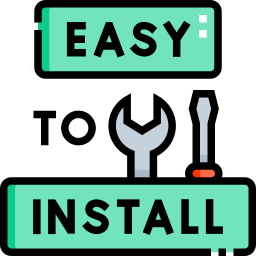Protect Yourself from Phone Issues Right from the Start.
- Unlock any Android lock screen without a password.
- Bypass FRP on Samsung, Xiaomi, Redmi, and more.
- Recover lost data without root access required.
- Fix system issues on Samsung and Xiaomi devices.
- Manage Android data and files in one place.
- Transfer and back up all Android data easily.

10 Years of
Experience

1,000,000+
Satisfied Users

8 Core
Technologies

20,000+
Device Models
DroiDKit is an advanced software toolkit designed for Android developers and enthusiasts, offering a comprehensive suite of tools to streamline app development and device management. With its user-friendly interface and robust features, DroiDKit simplifies tasks such as debugging, performance optimization, and testing. It integrates seamlessly with existing development environments, providing essential utilities and insights to enhance productivity and efficiency. Whether you’re a seasoned developer or a newcomer to the Android ecosystem, DroiDKit empowers you with the tools needed to create, refine, and manage high-quality Android applications effortlessly.
Why Use DroiDKit?
DroiDKit stands out as an invaluable tool for Android developers for several compelling reasons:
- Simplifies coding and app creation.
- Easily identify and resolve issues.
- Analyze and enhance app speed and efficiency.
- Ensure apps perform well across devices.
- Accessible for both experienced and new developers.
- Works well with existing development environments.
- Provides live insights into app performance and resource usage.
- Offers automation for repetitive tasks, saving time and reducing manual effort.
- Allows tailored settings and tools to fit specific project needs.
Key Features of DroiDKit

Screen Unlocker
Remove all screen locks immediately.

FRP Bypass
Easily bypass FRP lock effortlessly

Data Recovery
Recover lost data without a backup plan.

Data Extractor
Recover data from a broken device

System Fix
Recover data from a broken device

Data Manager
Complete control over all Android content

System Reinstall
Reinstall any version you prefer.

System Cleaner
Instantly free up phone space in one tap
Getting Started with DroiDKit
Here’s a step-by-step guide to help you get started with DroiDKit:
Installation Guide for DroiDKit
- Download: Get the installer from the official website.
- Run Installer: Double-click the file and grant necessary permissions.
- Follow Wizard: Accept the EULA, choose the installation directory, and install any required dependencies.
- Complete Installation: Click "Install" and wait for the process to finish.
- Launch: Open DroiDKit from the desktop shortcut or start menu.
- Update & Configure: Install any updates and adjust settings as needed.

Configuration and Customization
Here’s a brief overview of configuring and customizing DroiDKit:
System Setup: Ensure your computer meets the required specs and set your preferred language via the settings menu.
App Preferences: Customize automatic updates, notifications, and download locations for firmware and backups.
Optimization: Set how DroiDKit handles junk file cleanup and whether to run optimizations automatically.
Device Compatibility: Enable USB Debugging on your Android device for full functionality and configure model-specific settings.
Data Recovery Customization: Choose specific data types (photos, contacts, etc.) and filters (e.g., date) to speed up recovery.
Rooting: Manage root permissions and enable/disable apps that require root access. DroiDKit also supports unrooting.
Security: Enable encryption for sensitive data during recovery or backups in the Security Options section.
Deep Recovery: The Definitive Solution
Additionally, DroidKit offers a Deep Recovery mode that thoroughly scans every part of your phone’s storage to locate all deleted data that hasn’t been overwritten. Powered by its unique NO-DATA-LOSS technology, it provides the highest success rate for recovering lost data in the industry.
Best Practices for Using DroiDKit
Sure! Here’s a brief summary:
- Regular Maintenance: Schedule scans and clean cache often.
- Backup Data: Always back up before major fixes.
- Battery Optimization: Use tools to manage battery life.
- Update Software: Keep DroiDKit updated for the latest features and fixes.
- Use Tools Wisely: Choose the right tool for each specific issue.
- Avoid Overuse: Don’t overuse optimization features.
- Update Device Software: Keep your Android and apps up-to-date.
- Careful Data Recovery: Minimize device use during recovery to avoid overwriting data.

Don't Just Take Our Word for It


Frequently Asked Questions
DroiDKit is a comprehensive toolkit or library for Android development that simplifies common tasks and enhances productivity by providing pre-built components and utilities.
DroiDKit offers a range of features such as user interface components, network utilities, data management tools, and performance optimization, making it easier and faster to develop Android apps.
Yes, DroiDKit is free to use for developers. However, you should check its licensing terms for commercial use or contributions.
To install DroiDKit, add the required dependency to your build.gradle file and sync the project with Gradle. Follow the installation guide provided in the documentation for more details.
DroiDKit supports a wide range of Android versions, typically from Android 5.0 (Lollipop) and above. Check the documentation for the most recent compatibility updates.
Yes, DroiDKit is designed to be compatible with other libraries and toolkits. It integrates well with popular libraries like Retrofit, Glide, and Room.
Yes, DroiDKit fully supports Kotlin and can be used in both Java and Kotlin-based Android projects.
Key features include UI components, network utilities, data management tools, performance optimization utilities, and tools for testing and debugging.
DroiDKit provides built-in network utilities that simplify making HTTP requests, handling responses, and managing errors. It supports both synchronous and asynchronous requests.
Yes, DroiDKit allows for extensive customization of its components to fit your app’s design and functionality requirements.
Yes, DroiDKit is designed to handle projects of any size, from small apps to large-scale enterprise applications, providing robust tools and features for scalability.
Yes, DroiDKit includes features for data caching, local storage, and offline-first architecture, allowing apps to function without a network connection.
You can report bugs or request new features by contributing to the DroiDKit GitHub repository or contacting the support team through official channels.
Yes, there are several online communities, forums, and GitHub repositories where DroiDKit users share tips, code, and experiences.
To update DroiDKit, modify the version number in your build.gradle file to the latest release and sync your project with Gradle.
Yes, DroiDKit includes tools for testing and debugging, such as logging utilities, error handlers, and integration with popular testing frameworks.
DroiDKit offers tools for managing local storage, including SQLite databases, shared preferences, and in-memory caching.
Yes, DroiDKit is compatible with Android Jetpack components, and you can use them together in your Android projects.
DroiDKit is primarily designed for native Android development, but some of its utilities may be adapted for use in hybrid apps with additional configurations.
Best practices include following proper code organization, modularizing components, optimizing performance, and securing your application.
Schema
DroidKit - Android Data Recovery & System Repair Tool
DroidKit offers Android data recovery, screen unlock, & system repair. Easily recover lost files, fix device issues, & unlock your phone without data loss.
Price: Free
Price Currency: $
Operating System: Windows 7, 8, 10 , 11 and 11 Pro
Application Category: Software
4.7
